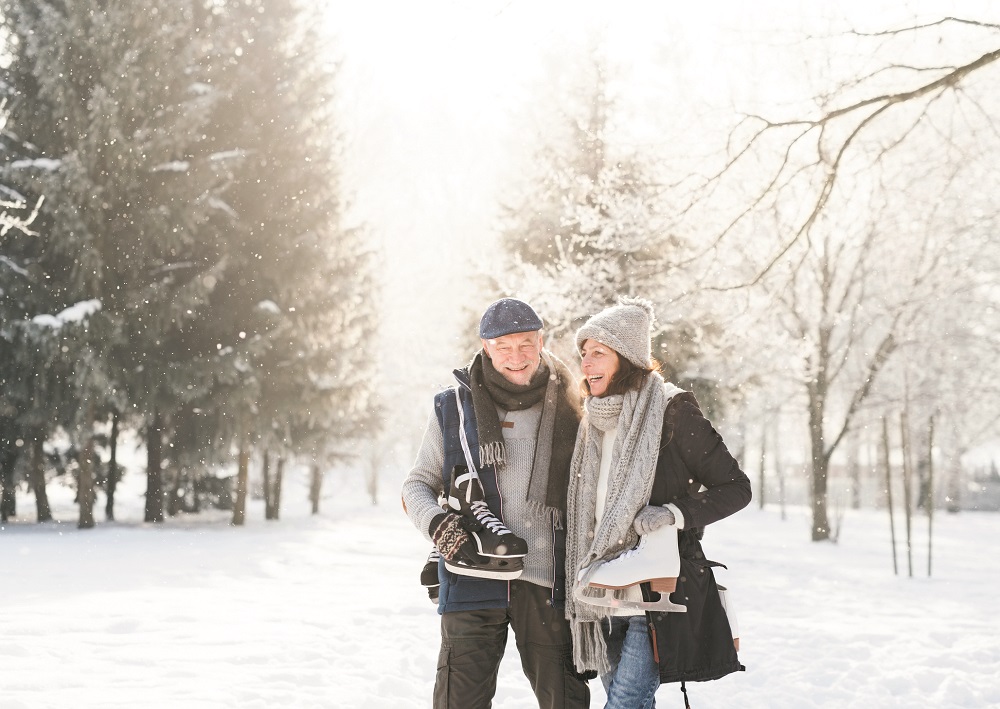Improve your health this winter by fine tuning your approach to cold-weather activities.
Most people understand the risks of summertime outdoor doings. They’ll gear up with sunscreen, hats, insect repellant, and sensible shoes for even simple activities like dog walking or gardening. But every winter, I see summer-sensible folks in my office for injuries caused, in part, by failing to adequately plan for cold-weather fun.
Here are the four most common cold-weather-induced ailments I see in family practice:
Falls: Many winter falls can be prevented by choosing the right footwear. Canadian researchers at the University of Toronto recently found that only nine out of 98 so-called winter boots actually worked to keep people stable on icy surfaces. If your boot soles get slick and slippery on a patch of ice, a fall is inevitable. Ascertain how well your shoes and boots perform on ice. Consider buying a new pair that have a tested slip-resistant rating. You can also improve the safety of your current winter boots by using traction cleats designed for use in everyday winter chores. These rubber and wire devices slip on to most stout footwear. They work well and cost a fraction of the price of new boots.
Falls on ice are sudden and surprising. They can cause fractured ribs, separated shoulders, concussion, and even depression. If you hit your head, are in pain, or mentally confused after a fall, see your doctor immediately. If you’re just a bit bruised, apply homeopathic Arnica gel to the bruised spots and take one Arnica 30 C homeopathic tablet under the tongue, away from meals, three times a day for one or two days.
Hypothermia is a condition where heat loss exceeds heat production. While severe hypothermia happens from prolonged exposure to cold or from being in cold water, I’ve treated patients for hypothermia acquired while watching outdoor sporting events and from walking in windy weather with inadequate clothing.
Early signs of hypothermia are shivering, fatigue, and pale skin. Later, confusion, fumbling, and slurred speech occur. Alcohol, caffeine, hunger, dehydration, and wind exposure increase your risk for hypothermia, so avoid these. Consume hot herbal, honey-laced beverages like ginger, licorice, or mint tea and healthy snacks like nuts and dried fruit when attending winter outdoor events. Wear windproof clothing, and shelter behind trees, fences, or a building when possible. Because hypothermia can harm your brain, heart, and lungs, take it seriously. At the first sign, head indoors.
Frostnip and frostbite: Most of us have experienced fingers, toes, or nose getting cold, white, numb, maybe tingling. We get indoors, warm up, and all is well. That’s frostnip. It doesn’t cause permanent damage, though the skin may be sensitive for several days and the body part that was nipped may nip again in the future.
Frostbite is more severe. It causes permanent damage to the skin and can even lead to the loss of fingers and toes. In addition to hydration and proper clothing, warming foods are good frostnip preventative medicine. Warming foods include most root and tuber vegetables (sweet potatoes, carrots, and turnips). Eating soups, stews, roasted meat, garlic, and onions will also help keep you warm. Be sure to also include cinnamon, cloves, and ginger in your winter diet.
Keep warm and keep well.

